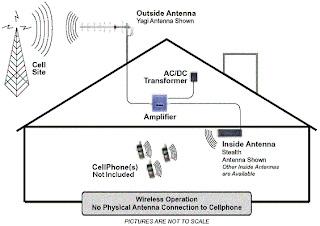Last 2 decades have been revolutionary in telecommunication world.Things which weren't imagined in the 90s are being practically applied on a daily basis today.Mobile communication is one such technology which has evolved rapidly over the last decade,changing the status of cell phones from luxury to a daily necessity.
In India the entry of pager in early 90s proved to be the breakthrough in wireless telecommunication.Post pager.people only knew about ham radio and walkie talkies as the standard forms of wireless communication.
Just within a few years a mobile phones were available in open markets of India and started becoming popular.The whole PCO concept slowly started getting out of picture as more and more people subscribed to mobile phone services.The rates started at ₹.60/minute in mid 90s and is currently at 1.5 paise/second in 2013.
During this period,mobile phone instruments also went through lot of phases from heavy instruments with pull out antennas and LCD displays to super light,smartphones with high defintions.
During all this evolutions came a device called FCT ie fixed cellular terminal or fixed wireless terminal in early 2000s.
The FCT or FWT has a GSM or CDMA modem in it with a SIM card slot.Basically it facilitated voice communication using a SIM card without the help of a cell phone.
The FCT/FWT proved a major player for network operators who gave away special numbers to small business involved in tele-marketing and customer servicing along with FCT.
The FCT can be used with an EPABX and replace landline completely.
As the mobile call charges became cheaper than landline call charges,FCT proved to be a major force for network operators to increase their customer base.
Another speciality of FCT was its remote sensing ability.It can sense mobile signals as low as -95db to establish a clear communication through a mobile SIM.
No cellular device in world can operate under such low signal comfortably as FCT can.
The FCT soon became a cost effective solution for mobile signal repeaters ,since they costed less than 10% of the cost of a mobile signal repeater system.
Soon FCTs with SMS and data were also developed and widely applied for call centers.
FCTs in their presence of more than 13 years did not get enough popularity due to their lack of availability in open market.
Who can use FCT?
1) Any small business who does not want heavy paperwork and installation for landline phones.
2) Someone who need a mode of mobile communication in a low/poor signal area
3)Customer Care/Offices who need to implement their special number for their entire office via EPABX/INERCOM system.
Why FCT?
1) It has remote sensing capabilities and come with an external antenna which can facilitate clear communication even with weak signals.
2)Attaching a high range cordless phone to FCT gives you a total mobility in your office,workshop or factory easily
3)The installation is very simple and device is completely portable with battery backup facility.
4)Saves lot of money if compared to MTNL/BSNL landlines on any given day.
IF you wish yo buy one,visit out page http://www.boosterwala.com/fct-and-data-cards.php or write us at particle.tele@gmail.com
Call us now to order one-9987180210.
In India the entry of pager in early 90s proved to be the breakthrough in wireless telecommunication.Post pager.people only knew about ham radio and walkie talkies as the standard forms of wireless communication.
During this period,mobile phone instruments also went through lot of phases from heavy instruments with pull out antennas and LCD displays to super light,smartphones with high defintions.
During all this evolutions came a device called FCT ie fixed cellular terminal or fixed wireless terminal in early 2000s.
The FCT or FWT has a GSM or CDMA modem in it with a SIM card slot.Basically it facilitated voice communication using a SIM card without the help of a cell phone.
The FCT/FWT proved a major player for network operators who gave away special numbers to small business involved in tele-marketing and customer servicing along with FCT.
The FCT can be used with an EPABX and replace landline completely.
As the mobile call charges became cheaper than landline call charges,FCT proved to be a major force for network operators to increase their customer base.
Another speciality of FCT was its remote sensing ability.It can sense mobile signals as low as -95db to establish a clear communication through a mobile SIM.
No cellular device in world can operate under such low signal comfortably as FCT can.
The FCT soon became a cost effective solution for mobile signal repeaters ,since they costed less than 10% of the cost of a mobile signal repeater system.
Soon FCTs with SMS and data were also developed and widely applied for call centers.
FCTs in their presence of more than 13 years did not get enough popularity due to their lack of availability in open market.
Who can use FCT?
1) Any small business who does not want heavy paperwork and installation for landline phones.
2) Someone who need a mode of mobile communication in a low/poor signal area
3)Customer Care/Offices who need to implement their special number for their entire office via EPABX/INERCOM system.
Why FCT?
1) It has remote sensing capabilities and come with an external antenna which can facilitate clear communication even with weak signals.
2)Attaching a high range cordless phone to FCT gives you a total mobility in your office,workshop or factory easily
3)The installation is very simple and device is completely portable with battery backup facility.
4)Saves lot of money if compared to MTNL/BSNL landlines on any given day.
IF you wish yo buy one,visit out page http://www.boosterwala.com/fct-and-data-cards.php or write us at particle.tele@gmail.com
Call us now to order one-9987180210.






